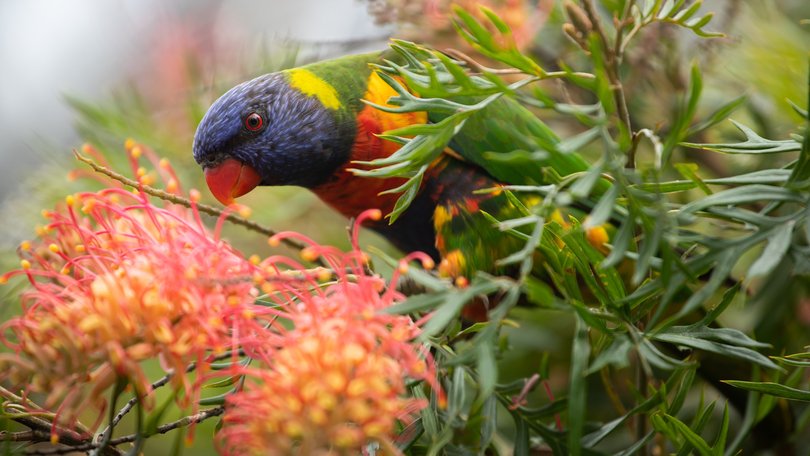THE NEW YORK TIMES: The parrot, its parasites and a shared struggle to escape extinction

For decades, the kakapo has been climbing its way back from the brink of extinction.
Luckily, the green parrot, found only in New Zealand, is a good climber. (It has to be, since it cannot fly.) And the bird has had plenty of help from humans who are managing its tiny, but growing, population.
But conservation is complicated work. And according to a study published Thursday in the journal Current Biology, the birds’ centuries-long decline has been accompanied by another, less visible change: Parasites that once depended on the bird have diminished more than scientists would have expected.
Sign up to The Nightly's newsletters.
Get the first look at the digital newspaper, curated daily stories and breaking headlines delivered to your inbox.
By continuing you agree to our Terms and Privacy Policy.That might not seem like such a tragedy, given the low regard most humans hold for parasites. But their role can be more complicated: In some cases, the relationship between host and parasite is mutually beneficial.
And when extinction is a possibility for both parrot and parasite, that relationship warrants further investigation.
“When you’re dealing with extinction and biodiversity loss — of anything — there are impacts we still don’t understand,” said Alexander Boast, an author of the new study and a paleoecologist at the Bioeconomy Science Institute in New Zealand.
“Whether it’s a large, flightless parrot or whether it’s a tapeworm, they all potentially have a role to play,” he added.
Marlene Zuk, an evolutionary biologist at the University of Minnesota who was not involved in the study, said that in many cases, parasites and hosts build deep, complex relationships over many years, a notion that has become increasingly clear to conservationists.
“It’s not that parasites and pathogens are always good for us,” she said. “It’s that they really did make us who we are.”
There is evidence, for example, that parasites — including those that cause some harm to their hosts, like intestinal worms — may help animals, and even humans, develop their immune systems.
It is possible that kakapos built a similar relationship with their parasites, some of which appeared to have made a home in those parrots and nowhere else, the study found.
The kakapo is a weird bird — the kind that calls for a bassoon riff when it shuffles into a nature documentary. The kakapo’s feathers are a bright gilded green mottled with black, and the bird’s life span is comparable to that of a human. The kakapo is owlish for a parrot, with front-facing eyes and a nocturnal schedule.
But unlike owls, kakapos are herbivores whose wings are not strong enough for flight. In order to reach their favourite food, the bright red rimu fruit, they use their beak and claws to climb trees.
Kakapos are gentle creatures that can be friendly to people. But people have not always been friendly to these birds. Human settlers arrived in New Zealand about seven centuries ago, first Polynesians and later Europeans. Hunting and deforestation nearly drove the parrots to extinction, with help from cats, dogs, rats and stoats.
But in recent decades, the kakapos have regained a foothold on sanctuary islands where their animal predators were eradicated. The population has now grown to 241 birds.
Their parasites, by contrast, have not seen a similar recovery.
To measure the changes in kakapo parasites over centuries, the researchers in New Zealand relied on droppings.
Kakapos tend to poop in places that are cool and somewhat enclosed. As a result, droppings from centuries ago were often fossilized, waiting to be found in caves. More recent droppings, only decades old, were frozen and stored by humans. And modern droppings are, well, around. That left an incredibly rich record for analysis.
When researchers compared how many kinds of parasites were found in modern droppings, as compared with ancient ones, “the level of loss was much higher than we expected,” Dr. Boast said. “I mean, 85% of species found in ancient populations missing in modern ones — that’s extremely high.”
It is still too soon to say how alarming the findings are, and what the parasite loss means for the kakapos’ survival. But the research raises questions about whether conservationists need to rethink their approaches to certain veterinary practices used to keep the birds healthy, like deworming.
Andrew Digby, a scientist and kakapo specialist at New Zealand’s Department of Conservation who was not involved in the current study, said that kakapos are “still critically endangered, and by no means out of the woods, even though the population is growing.”
When it comes to parasites, Digby said, those working to restore the kakapo’s numbers have taken “a fairly benign view,” treating only those birds that have serious problems, such as mites or feather lice.
“Parasites may well have a role to play in kakapo health,” he added, “but we simply don’t know enough.”
He pointed to some good news: The coming summer in the Southern Hemisphere could be a big breeding season, which would be the first time the parrots have bred since 2022. But there is reason to continue worrying about the birds’ future, too: New Zealand is bracing for a highly pathogenic strain of bird flu.
This article originally appeared in The New York Times.
© 2025 The New York Times Company
Originally published on The New York Times
